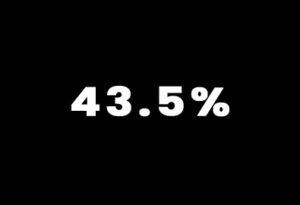Small Businesses
Starting and running a small business is no small task. From managing finances to building a loyal customer base, the challenges can feel overwhelming. But you don’t have to navigate this journey alone. Whether you’re launching your first venture or looking to take your business to the next level, personalized guidance and strategic planning can make all the difference. Let’s work together to turn your vision into a thriving reality.

Did you know?
Small businesses account for 43.5% of the United States’ Gross Domestic Product (GDP), underscoring their vital role in the national economy.

Employment Impact
Employing approximately 59 million people, small businesses represent 45.9% of the American workforce, highlighting their significance in job creation and employment.

Breadth of Service
Comprising 99.9% of all U.S. businesses sectors, small enterprises dominate the business landscape, reflecting their prevalence and importance across all industries.

New Jobs Added!
Over the past 25 years, small businesses have been responsible for creating nearly 13 million net new jobs, accounting for approximately two-thirds of all new jobs added to the economy during this period.
Coaching and Tools
Backbone of the Economy
Small businesses are the lifeblood of the economy in the United States. These enterprises don’t just fuel innovation—they also provide nearly half of the nation’s jobs, employing around 59 million people. Whether it’s a family-owned shop, a local café, or a startup with big ambitions, small businesses collectively account for 43.5% of the country’s GDP, underscoring their immense impact on economic growth and community vitality.
The Challenges & Opportunities
While small businesses play a crucial role in the economy, they also face unique challenges, from managing cash flow to navigating regulatory requirements. However, with the right support and guidance, these obstacles can become stepping stones to success. Whether you’re looking to start a business, scale operations, or refine your financial strategy, having a mentor or coach can provide the insight and tools needed to thrive in today’s competitive landscape.
Tools to Use On This Debt
Separate Business and Personal Finances
- How it Helps: Clear financial separation simplifies tax filing, prevents legal complications, and improves expense tracking.
- Action Step: Open a dedicated business checking account and use a business credit card for all company-related expenses.
- Pro Tip: Use accounting software like QuickBooks or Wave to categorize expenses and monitor cash flow in real-time.
Focus on Cash Flow Management
- How it Helps: Positive cash flow ensures you can cover expenses, reinvest, and weather unexpected downturns.
- Action Step:
- Create a cash flow projection to anticipate income and expenses for the next 6–12 months.
- Invoice promptly and offer early payment discounts to improve receivables.
- Pro Tip: Review and negotiate payment terms with vendors to delay outgoing payments without penalties.
Leverage Tax Deductions and Credits
- How it Helps: Maximizing deductions reduces taxable income and preserves cash for reinvestment.
- Action Step:
- Keep detailed records of expenses like office supplies, travel, equipment, and home office use.
- Consult a tax professional to ensure you’re taking advantage of all eligible deductions and credits.
- Pro Tip: Use apps like Expensify to track expenses on the go and avoid missing deductions.
